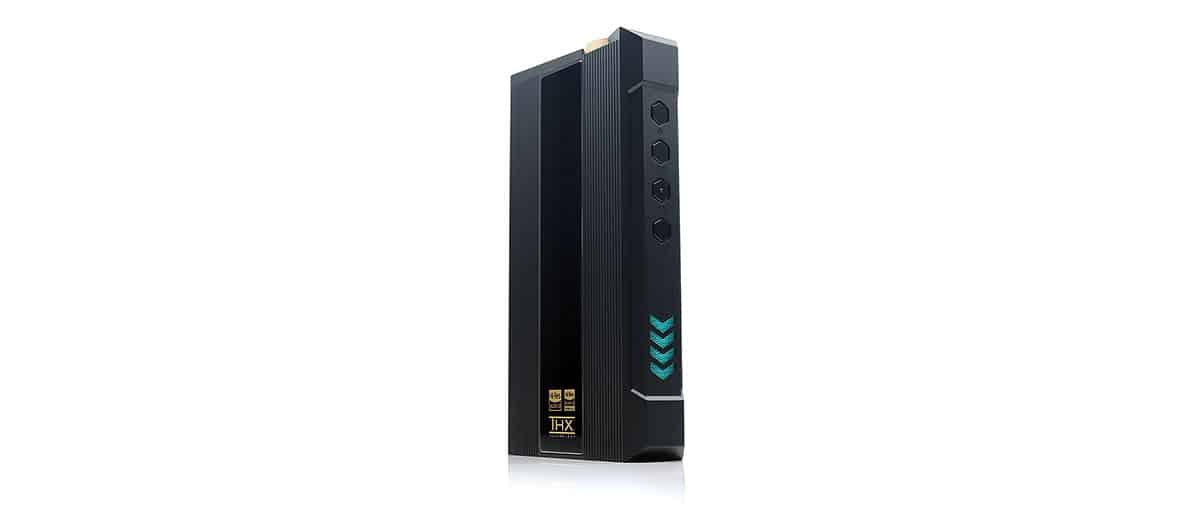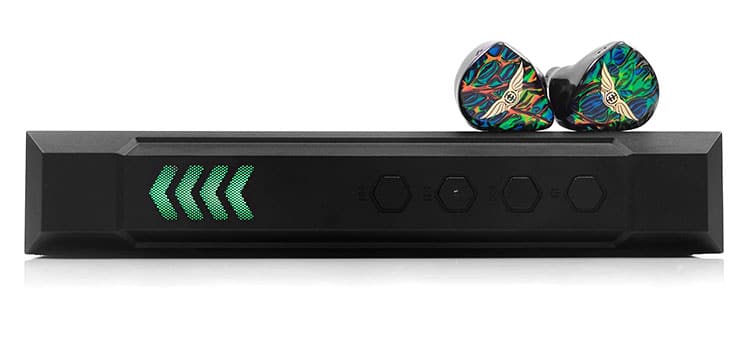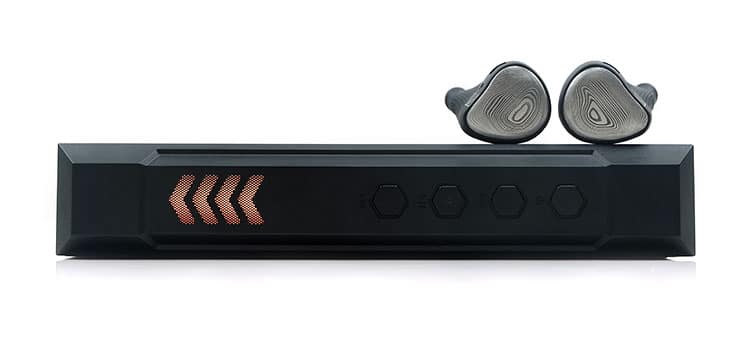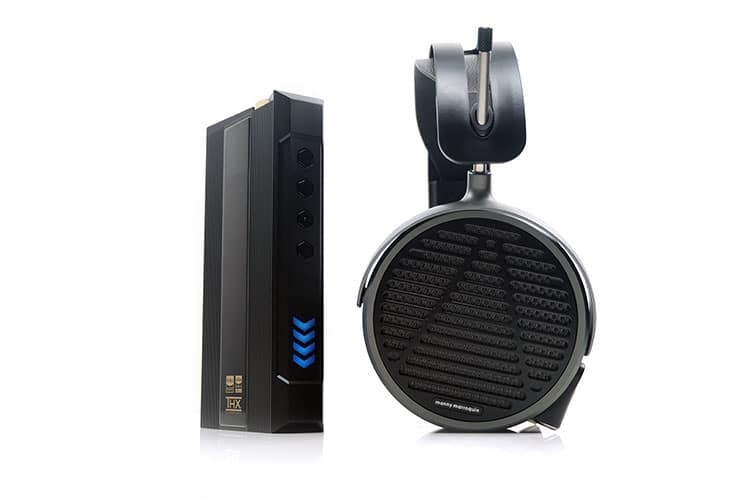Sound Impressions
Summary
The FiiO Q7 is an absolute tour de force of a portable amp and DAC at this price point. It may not quite have the delicate subtleties of a Mojo 2 and its unique DSP controls but it more than makes up for that with sheer power and the ability to handle almost any IEM or headphone thrown at it.
The Q7 is deft enough to handle sensitivity as well as load allowing pairings to retain an excellent black background or scale accordingly.
Headphones such as the Audeze MM-500 right up to something like the ZMF Headphones Atrium present no problems to the Q7, especially the Atrium’s dynamic range performance which is very impressive in DC Mode.
The coloration is very close to the original M17 DAP which isn’t terribly surprising given it’s the same DAC chipset and dual THX amplifier setup inside.
It runs natural-to-neutral with plenty of low-end gusto and a slightly forward upper midrange presence. Treble is lively on most pairings but not overbearing and is actually marginally softer in its delivery compared to the M17.
I do think the switch to a single ES9038PRO chipset as opposed to the M17’s dual combo does shave off a little of that top-tier performance in terms of absolute clarity and holographic staging. The rendering does have a little comparative softness throughout. However, you only really notice it side by side with a reference level or very transparent monitors.
In some ways, the slightly more relaxed performance of the Q7 will suit brighter monitors and IEMs a bit better though with the DC Mode the Q7 tightens up considerably, especially in terms of low-end layering and general instrumental separation.
Timbre
The tone and timbre are very close to the M17, perhaps just lacking a little treble extension and presence giving it that slightly softer coloration as mentioned in the summary.
That can be a pro or con depending on your pairing. I found the Q7’s coloration to work very well with brighter IEMs such as the Noble Audio Viking Ragnar which is a very precise but sparkling EST hybrid monitor. Less so with warmer IEMs such as the VE Phonix where I would bias to the M17’s more precise and slightly improved treble clarity.
The tonal bias with all our pairings though is still very much a faithful representation of the M17’s robust performance. That means plenty of heft on the low end with a solid bass fundamental underpinning lower pitching instruments making the Q7 a very modern rock and pop-friendly portable amp.
It also can give vocal performances a decent bit of body though not quite as smooth and natural in the upper mids percussion timbre compared to something like the Mojo 2.
Upper-mid percussion can still resonate rather than complement with a very precise rather than liquid overtone but never struck me as being splashy or thin sounding and certainly not fatiguing either with the right pairing.
Staging & Dynamics
Much like the M17, the Q7 is a very satisfying performer in DC Mode when it comes to filling out demanding headphone staging requirements.
For example, the 300Ω Atrium sounds a bit 2D-like in battery mode, and not quite as precise on the low end either. With DC Mode turned on with the Ultra-High gain setting the dynamic range went up a notch producing a much more holographic and immersive sound stage.
The depth and power with that additional voltage and gain level in DC mode are almost desktop-class IMHO for headphones with such an impressive level of headroom.
Battery mode will more than suffice for IEMs, with most sitting very comfortably on low gain. I never really felt the Q7 lacking in air or space, however, going back to the M17 comparison, the treble extension and absolute clarity are just a shade behind as is the tightness and perceived snap at the very low end.
Instrumental separation is also very subtly reduced over the M17 but again, a single DAC implementation may well be a factor here, and if so it’s not surprising to have a very marginally more centered staging quality.
Again, this might work in your favor if, for example, you have a fairly mid-forward-sounding monitor or headphones. The Q7 feels a little more forgiving than the M17 in that regard with monitors such as the Empire Ear’s Odin that can get shouty or harsh sounding with the wrong pairing.
Synergy
Flexibility
The Q7 offers a very wide range of output options ranging from SE 3.5mm TRS and a very rare 6.35mm alternative to 2.5mm TRRS and 4.4mm Pentaconn balanced alternatives. It’s probably one of the few portable DAC/Amps that has such a complete selection of PO and mirrors that of the M17 DAP.
As you would expect from this plethora of outputs, the output power of the Q7 is quite varied also, ranging from 550mW into a 32Ω load going SE to 1.5W using a balanced output in battery mode and double that in DC mode.
Combined with multiple levels of gain you should be able to find a suitable output and gain control for just about any headphone or IEM out there.
Efficiency
There have been some slight adjustments to the output impedance rating on the Q7 compared to the parameters first reported on the M17. We are now looking at <1.2Ω instead of <1Ω for SE and <2.2Ω instead of <2Ω when going balanced.
My opinion is the same as before in that it’s a shade high for sensitive IEMs and it could well mean a very slight impedance skew for super-sensitive BA IEMs using the balanced output.
Testing with the Andromeda 2020 using an IEMatch 2.5mm TRRS connector the bass without the IEMatch was a little richer and more aggressive compared to using the IEMatch on low gain.
For the vast majority of IEMs, particularly hybrids, it should be fine and for headphone users, you should experience no issues at all.
Noise control on the balanced output might be one of the reasons for shifting up to 2Ω because with both the Solaris SE and the Andromeda 2020, the Q7 was very quiet with no perceived noise in low gain battery mode.
Impressively quiet you could argue with almost perfect channel matching on low volume. You will find the same low noise performance from the SE output also with an even blacker background to go along with it.
IEM Pairings
There isn’t a huge amount of difference here in my opinion about IEM pairings with the Q7 that I have not already established with the M17 previously.
Like the M17, the Q7 has a ton of energy to its sound signature and no shortage of headroom either for pickier EST driver hybrid combos. If you happen to have dynamic drivers inside then the Q7 will give them a kick up the backside producing some excellent sub-bass presence and a very engaging mid-bass punch if the tuning allows it.
I tested several dynamic driver hybrids ranging from the UM MEXT and the Valkyrie MKII up to flagship models such as the Viking Ragnar from Noble and EEs Odin and all of them had a very satisfying low-end response.
If I was nitpicking then it is that slight softness from the Q7 on the lows compared to the M17, something you read up on in more detail in our comparison between these two models on page 3 of this review.
The M17 has a little more contrast and improved tightness from its dual DAC design which gives it a bit more depth and separation over the Q7. It tends to work better for imaging and acoustic accuracy with high-fidelity models like the VE Phonix and the Ragnar.
On the flip side, however, the Q7 is marginally smoother on the highs of flagship models such as the Odin and the Ragnar, both of which have either a forward upper midrange or a sparkling treble sound. I found the M17 just a little more accurate for brighter mixes with these two models whereas the Q7 subtle softened up note leading edges.
That’s an important difference for me because, like the M17, the Q7 still has an upper mids bias or a lift in energy here that can work against mid-forward models such as the Odin.
DC Mode
This is likely to be the difference maker for those considering the Q7 for headphones. Not just doubling the output power but that increase in voltage swing also makes the Q7 a prime candidate for both current and voltage-hungry headphones.
Not that 1.5W into 32Ω going battery mode is in any way insubstantial but once you switch to DC Mode most headphones will get a vibrant lift in their dynamic range performance offering an enhanced staging performance in the process.
Planar Low load Pairing
You do not need ultra-demanding headphones to hear the effects of switching in and out of DC mode. For example, the Audeze MM-500 is an outstanding pairing with the Q7 and is rated at 18Ω and 100dB SPL.
The MM-500 has the energy to burn, with a snappy yet smooth-sounding coloration and a top-end that is perhaps the most coherent and pleasing Audeze has produced to date. The Q7’s vivid sound signature is a strong match and teases out a very enjoyable neutral-to-natural timbre from the MM-500, especially on the lows and vocal performances.
Now, with battery mode and going into a high gain setting using the standard SE cable, the MM-500 sounds a little on the smother side compared to the DC Mode. Again, just that slight hint of softness in instrument strikes and a less defined low-end. It’s a reasonably safe sound also, nothing peaky or with too much glare.
With the DC ultra-high gain mode, everything tightens up, especially the bass performance and treble presence. It simply sounds snappier, more dynamic, and with better separation. This is not a demanding headphone but you can hear the difference some additional power brings to the table.
Dynamic Driver High Load Pairing
On the opposite side of the resistance scale, the DC Mode makes a huge difference with the 300Ω ZMF Headphones Atrium.
In battery mode using a 4.4mm balanced connection, the Atrium sounds good but again just a slight bit of softness on the lows. The dynamic range is above average but nothing spectacular. The staging for me was more centered and 2D-like in its delivery.
The natural to neutral Q7 timbre is a strong counter for the Atrium’s laid-back tuning but where it becomes ideal is in DC Mode. The Q7 starts to really fill out the expansive staging quality of the Atrium properly sounding much more holographic in its performance.
There is a definite pick-up in Atrium’s dynamic range personified by a much tighter and more impactful bass delivery. That softness is more or less gone and the Atrium sounds a lot more accurate and articulate as a result.
OTG
A few notes of caution regarding the FiiO-supplied OTG-compliant short USB-C to USB-C cable. The first is that this cable is directional with arrows on the barrels indicating which end goes into the transmitting device and which goes into the Q7.
That means, if you plug it in the wrong way you will not get a handshake protocol and OTG digital audio will not work. I found that out the hard way at the start so hopefully, I am saving you a bit of time.
The second is a slight fussiness with connections with some phones. I tried 4 devices in total including going from the M17 to the Q7 as well as a Samsung Z Flip 3, Huawei Mate Xs 2, and a Xiaomi Note 11 4G.
Both the M17 and the Huawei Mate Xs 2 have no issues and recognized the Q7 for digital audio output using the FiiO Music app right away. The Note 11 4G connected, then disconnected on playback forcing me to unplug and replug which was successful the second time around for playback.
The Z Flip 3 on the other hand refused to cooperate. It will recognize and then reject much like the Note 11 4G but repeated attempts ended up being disconnected.
To be fair, this is not the first time that has happened with the LP W2 dongle having similar issues. I suspect it could be firmware related to the Z Flip 3 or an unrelated resource or power drain issue, i.e., not enough power for it to work.
Once you do connect and successfully playback from the source device the Q7 operates smoothly with an indicated signal sample rate in its LCD screen during playback.
Bluetooth Performance
Pairing
Pairing is very quick with the Q7. Simply start scanning from your transmitting source and you should find the label “FiiO Q7” showing up in your results list and then click pair. There is no code required or secondary confirmation on the Q7 itself, pairing is instant when you click to confirm.
Confirmed to work with both iOS and Android via an old iTouch 6th Gen, a Samsung Z Flip3, and on a PC Windows 10 environment.
Stability & Range
The Q7 range and stability within that range are excellent and possibly one of the best portable BT-receiving devices I have used to date.
Tested with a Samsun Z Flip 3, it easily matches all of my TWS earbuds and possibly even further in terms of absolute range which was about 10-15m with 1-2 walls. The only reason I could not go any further was the condo walls themselves. I suspect you can go further on the Q7 because within that 10-15m there wasn’t a single hint of choppiness in the signal.
Latency
This is the Achilles heel of the Q7 BT connection though to be fair quite a lot of BT devices do suffer from latency issues on a classic aptX connection with Windows 10. Using VLC I found myself adjusting by up to 0.02s to correctly sync visual speaking passages to the audio mix for media playback.
Given there is an aptX LL option the performance should improve when activated but unfortunately, all of my smartphones currently do not offer that option with most offering either classic aptX or LDAC only so I cannot confirm that.





